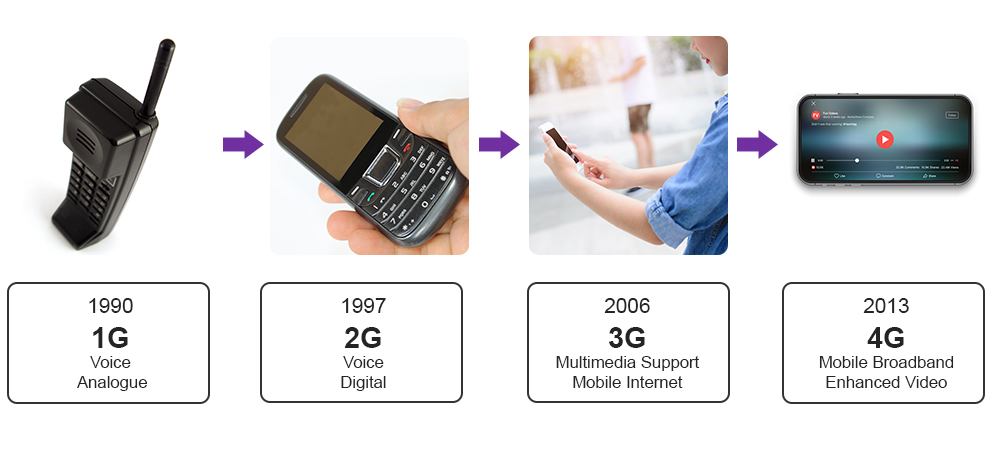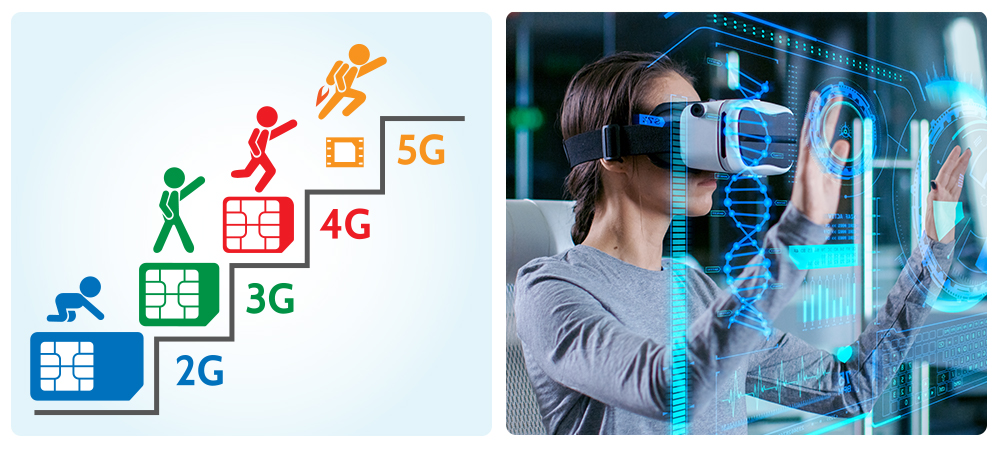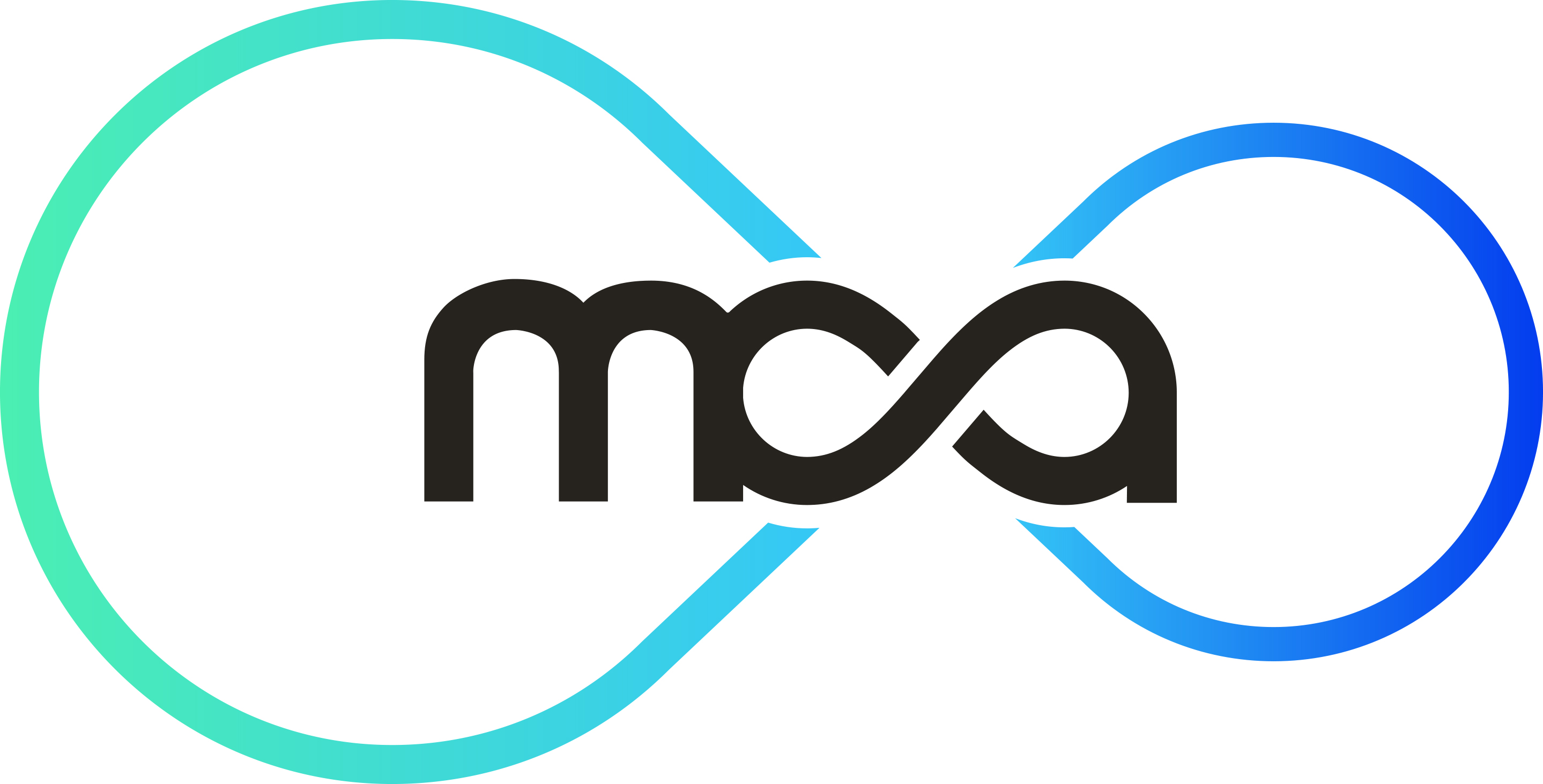Towards 5G
Timeline of Cellular Connectivity of Malta
Cellular Connectivity was introduced in Malta in 1990 when the first mobile phone call was made over 1G. In 1997, 2G mobile networks were deployed, enabling customers to benefit from better voice call quality. 9 years later, i.e. in 2006, one of the operators launched 3G in Malta. This meant that customers could now not only call and text but also use cellular connectivity to browse the internet. Similar to the international progress, local customers wanted more out of their mobile phone devices. 4G was the solution, providing mobile broadband that enabled better video streaming. This evolution has seen the customer base moving from the use of fixed telephony to mobile phone calls to the continuous increase in mobile data usage via Over The Top applications such as Whatsapp, Instagram, Facebook, Youtube.

What is 5G?
Previous generations of cellular connectivity sought to connect humans. 5G, however, is more ambitious. It is the first cellular technology which seeks to address all of the wider society’s needs, resulting in connecting not solely humans but everything from smart wearables to connected cars, from parking sensors to unmanned drones, from intelligent traffic systems to connected ambulances. These can be classified in three different use cases.
- Enhanced Mobile Broadband (eMBB): an enhanced user experience addressing the ever increasing demand for Mobile Broadband from human-centric applications. eMBB will enable use cases which require more speed such as Ultra-High Definition Video even in fast moving vehicles, Gigabit Hotspots, Augmented Reality, and Virtual Reality.

- Massive Machine Type Communication (mMTC): the provision of a network consisting of a large number of connected telemetric monitoring devices. This use case will evolve from the existing Internet of Things to connectivity of a massive amount of telemetric data sources, enabling applications such as Smart Homes, Smart Ports, and Smart Agriculture, providing us with the ability to efficiently monitor and control our assets.


- Ultra-reliable and low-latency communications (URLLC): innovative applications that require instantaneous reaction or the execution of mission critical applications remotely. This type of connectivity is necessary for applications which for most may seem to be too futuristic such as remote surgery, autonomous driving, and unmanned drones. However, the reality is that the major hurdle that these applications face is the current lack of cellular connectivity providing URLLC.

5G is more than just a new radio technology; it holds the promise of enabling new communications possibilities and applications. Such opportunities, of which many are still unknown, will eventually lead to a ‘hyper connected society’.
5G will transform our lives, economy and society at large.
The Malta Communications Authority’s Role
In 2016, The European Commission published the “5G for Europe: An Action Plan” (Ref: COM(2016) 588 final) presenting the timely deployment of 5G in all Member States as a strategic opportunity for Europe. This 5G Action Plan outlines a number of actions which are considered as necessary for the introduction of 5G in Europe. This was then supported by the publication of the European Electronic Communications Code, which defines a number of provisions to remove unnecessary burdens that may hamper the deployment of 5G including the harmonization of spectrum throughout Europe and making spectrum available in a timely-manner. These provisions legally bind each Member State.
5G can be deployed using the same frequency bands used for existing cellular networks (2G, 3G, 4G). However, when one mentions 5G, three bands are usually referred to as pioneer 5G bands, even though technically these bands are already being used for wireless communication. These bands are the 700MHz, 3.6GHz (3.4-3.8GHz) and 26GHz band (24.25-27.5GHz). In Malta, similar to the other European Member States, the UHF band from 470-790MHz is currently being used for Digital Terrestrial Television (DTT) and wireless audio programme making and special events (PMSE). In May 2021, DTT will move into another band and the 700MHz will then be assigned for 5G Networks. The National Frequency Plan already allocates the 3.6GHz to Mobile Applications, with the lower part being assigned and licenced for Broadband Wireless Access. In Europe (including Malta), the 26GHz has been allocated for Fixed Links and Satellite Applications.
As the National Regulatory Authority for Electronic Communications Networks and Services, the Malta Communications Authority is responsible of managing spectrum on behalf of the Government of Malta. In June 2018, The MCA has published a National Roadmap for the 700MHz and sub-700MHz bands (MCA/O/18-3256). In line with Decision (EU) 2017/899, the MCA embarked on a process to repurpose the 700MHz band. The MCA’s licensing frameworks for the assignment of the 700MHz, 3.6GHz and 26GHz bands will be in line with the appropriate Commission Implementing Decisions adopted pursuant to the Radio Spectrum Decision (676/2002/EC) and will be published within the timeframes set out in the relevant European Union legislation.
Spectrum Harmonization across the European Union adopts the principle of Technology and Service Neutrality. Therefore, the MCA’s licensing framework for these three bands will not mandate their use exclusively for 5G.
Open Invitation
The Malta Communications Authority would like to invite any entity interested in evaluating the potential impact of 5G to apply for the MCA’s test and trial licensing scheme. Any entity including, although not limited to, Mobile Network Operators, Academics, and Non-Governmental Organisations can apply for a test or trial licence. The test and trial licensing framework is a light-weight licensing framework providing the licensee temporary frequency authorisation to a particular frequency band. This is an opportunity to any entity which wants to evaluate the potential technical, social and environmental impact of a new technology including 5G. Further information on the test and trial licensing framework can be found here
Contact Us
The Malta Communications Authority invites you to submit any questions and clarifications regarding 5G to 5G@mca.org.mt
Resources
- The MCA’s Discussion Paper on “5G Demand and Future Business Models - Towards a Feasible 5G Deployment”
- First meeting of the 5G Think Tank
- The MCA Decision on the Test and Trial Licensing Framework
- The MCA’s note on EMF
- The European 5G Observatory





